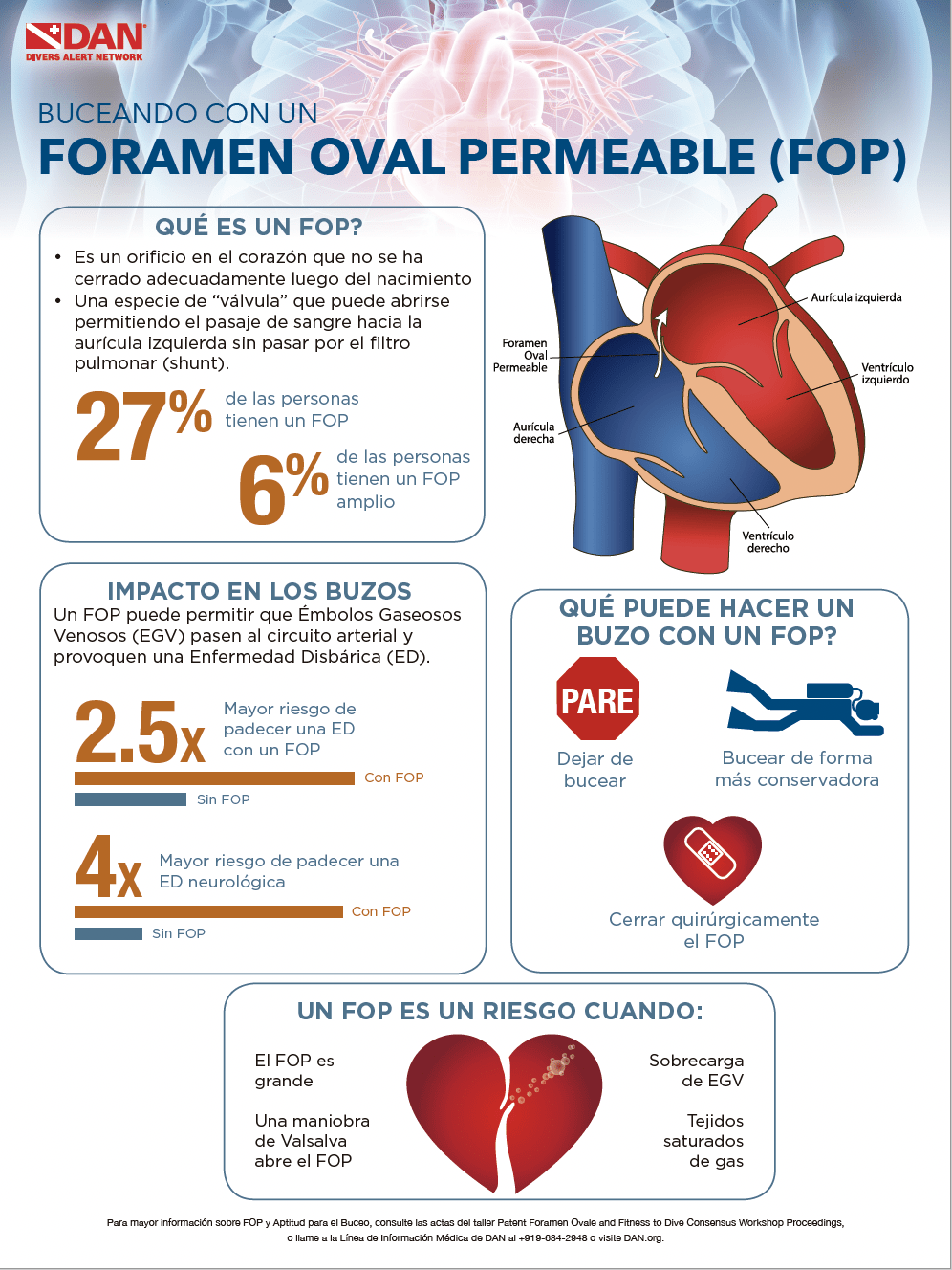A patent foramen ovale (PFO), or a “hole in the heart,” is a known risk factor for decompression sickness (DCS). This study sought to determine if closing this hole in a surgical procedure would decrease the risk of DCS and compared these findings to divers that were advised to dive more conservative profiles. Results corroborated current guidelines outside of the standardized research environment.
Este estudio experimental finalizó en 2019.
El foramen oval permeable (FOP), un defecto cardíaco congénito frecuente, es un orificio entre los lados derecho e izquierdo del corazón. Durante casi 40 años, se ha sospechado que las burbujas de gas inerte pueden viajar a través de este orificio y causar la enfermedad por descompresión (EDC).
In the beginning, there were two options for scuba divers with PFOs seeking to reduce their DCS risk: to stop diving or to dive more conservatively, such as conducting shallower profiles or diving nitrox on air tables. Recently, interventional cardiologists have begun to offer PFO closure as a third DCS risk mitigation strategy. Scientists have shown this procedure to be effective in reducing DCS risk in hyperbaric chamber studies and in standardized research environments, but its efficiency in the “real world” has not yet been established. Divers with PFOs needed to know how effective PFO closure was in reducing DCS risk outside of a highly regulated hospital. The goal of the DAN PFO study was to determine this information.
El estudio realizó un seguimiento de 23 buceadores con FOP que practicaron el buceo de forma conservadora y de 42 buceadores con FOP que se sometieron a un cierre del FOP durante un periodo de hasta seis años. Se examinó si la decisión de bucear de forma conservadora o de cerrar el FOP reducía la incidencia de DCS.
Results showed that PFO closure reduced the incidence of DCS. Conservative diving’s effect was inconclusive, most likely due to a small sample size. Since surgical procedures are not without risk, a subset of divers was identified that would benefit most and should consider this procedure. These were healthy divers with large PFOs, previous histories of serious DCS and strong desires to pursue advanced diving.

Otras lecturas y referencias
Artículos
- Actualización del estudio: FOP
- Buceadores con el corazón agujereado
- FOP y enfermedad por descompresión en buceadores recreativos
Publicaciones
- Puede descargar los siguientes informes relacionados, elaborados a partir de talleres, en la Biblioteca de publicaciones de DAN::
- 2015 Patente de foramen oval y aptitud para el buceo
- Directrices sobre el foramen oval permeable y la aptitud para el buceo
- Pollock NW. Patente de foramen oval: antecedentes e impacto en los buceadores. dirQuest. 2002; 3(1):15-18.
Publicaciones revisadas por expertos
- Anderson G, Ebersole D, Covington D, Denoble J. Eficacia de las intervenciones de mitigación de riesgos en buceadores con foramen oval persistente (patente). Submarinismo y medicina hiperbárica. 2019 Junio; 49(2):80-87.
- Cotton JB, Ebersole DG, Pollock NW, Denoble PJ. Historial de buceo y enfermedad descompresiva en buceadores sometidos a pruebas de foramen oval permeable y cierre posterior. Undersea Hyperb Med. 2011; 38(5):466.